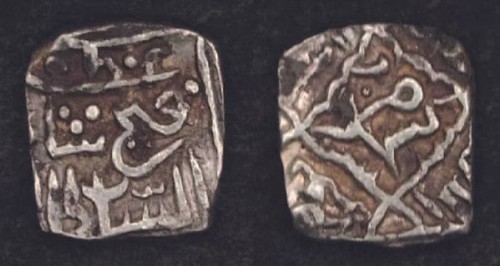
PREV ARTICLE
NEXT ARTICLE
FULL ISSUE
PREV FULL ISSUE
ELEVATING NUMISMATIC STUDIES IN INDIAThis article from India calls for greater incorporation of numismatics into broader history programs. -Editor There is no arrangement in any institution for teaching numismatics and paleography like vital sources of history. The ancient history of Jammu and Kashmir which is taught in colleges and universities has been relying mostly on the traditional sources of folklore, or on already written records. There has been hardly any effort on institutional level to look for other sources as well. For example the paleography and numismatic like material sources have not been taken so seriously. ‘If we talk of only coins, these have perhaps been least exploited source and numismatics has remained a rather sequestered discipline in terms of the incorporation of its insights into mainstream works. In fact it is with the efforts of few European numismatists and scholars like Rodgers, Lane Pole, Nelson Wright, Dr McDowell and Dr. Michel Mitchner others, who worked on Kashmir coinages that certain important information is available on the coins of Kashmir. So far their research is concerned, these numismatists have not come across coins of the earlier five Sultans - Sultan Shams Shah, Jamshid, Alaudin Ali-Sher, Shahab-ud-Din and Qutb-ud-Din. These Sultans either did not coin their money or their coins were not found. However, Nelson Wright in his catalogue of the coins in Indian Museum, Calcutta has attributed a single silver coin to Shams Shah I. Dilip Rajgor also in his standard catalogue of Sultanate coins has mentioned single silver coin of the same king but other numismatist have questioned its identity and these experts believe it as the coin of Shams Shah II (941- 42 AH). In view of these observations the Sultanate numismatic history emerges from the period of Sultan Sikandar who ascended the throne in 788 AH and continued up to 813 AH. In fact the earliest constant type of coinage was the standing Raja and seated goddess type. This type was introduced by a Kushan king named Kanshika in Circa 78 AD. The Hindu Rajas and Maharajas continued their mints in this type down to the Muslim rule in 1339 AD. It served the money market for about 1261 years. However, in the later stages, the type became so much degraded that it is difficult to say which figure is intended for the standing king and which for sitting goddess on the coins of later Rajas. This type got replaced by the Al - Sultan Al-Azani type which was introduced by Muslim Sultans in the 14th century AD. Sultans coined money in copper, silver and gold. Few brass coins of Sultan Zain-ul-Abidin are also known. Keeping in view the scope of this subject, the history departments of various colleges and universities of Jammu and Kashmir shall create certain space for numismatics and paleography learnings.
To read the complete article, see:
Wayne Homren, Editor The Numismatic Bibliomania Society is a non-profit organization promoting numismatic literature. See our web site at coinbooks.org. To submit items for publication in The E-Sylum, write to the Editor at this address: whomren@gmail.com To subscribe go to: https://my.binhost.com/lists/listinfo/esylum All Rights Reserved. NBS Home Page Contact the NBS webmaster 
|


